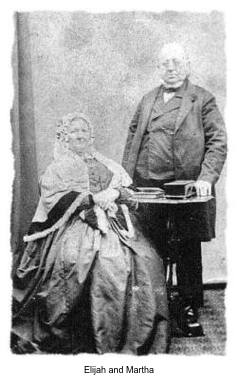Stuart Dixon – Elijah Dixon Descendant
I am of course equally delighted to be proud of the part my great great grandfather Elijah Dixon played, not just in this connection but in the wider social history of Manchester.
Elijah was a prominent local figure and a leading member of the Chartist movement who was present at the Blanketeer’s March in 1817 and was subsequently imprisoned. He was involved in the arrangements for the Peterloo meeting and whilst he did not speak on this occasion he continued to work towards reform, indeed he was chairman of the Manchester Reform Association at one time. His commercial success enable him to be philanthropic towards those who were unable to purchase property, and thus unable to vote, and headed a building project at New Moston for that purpose. Elsewhere in Manchester you will find a couple of “Dixon” Streets.
He was certainly a great benefactor during his lifetime which was due to his commercial success as you have perhaps discovered – he started off making matches in a small way and which grew to a match making and timber business large enough to attract the attention of, and subsequent merging with, Bryant and May, a large and still going company.
Out of interest the following appeared in the Manchester Times:
“On Saturday afternoon the funeral of Mr Elijah Dixon, “the Father of English Reformers”, took place at Harpurhey Cemetery, amid many profound demonstrations of respect from political and private friends of the deceased. The funeral cortege left the residence of the deceased, Vine House, Moston, about a quarter to one o’clock and proceeded along Hulme Hall Lane, where it was joined by deputations from the Newton Heath and Failsworth Liberal Association and a body of the workmen from the firm of Dixon, Son & Evans, of which the deceased was the senior partner. Other deputations joined the procession on the route, and everywhere the inhabitants, especially in Newton Heath, testified their respect for the memory of the deceased by lowering their blinds, whilst the route was crowded with spectators. The hearse was preceded by a contingent of about 500 men on foot, representatives of the Newton Heath and Failsworth Liberal Association, to which was added about 60 workpeople in the deceased’s firm. The hearse was followed by twelve mourning coaches, containing friends and relatives of the deceased. The coffin was borne to the grave and family vault (Grave No 4077) which already contained the remains of his wife who died June 3rd 1873.”















